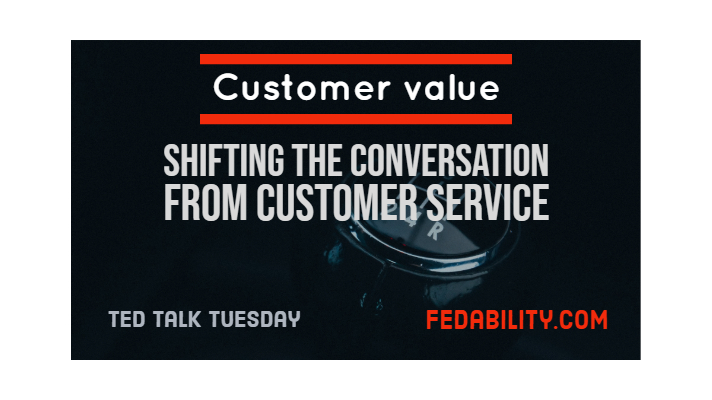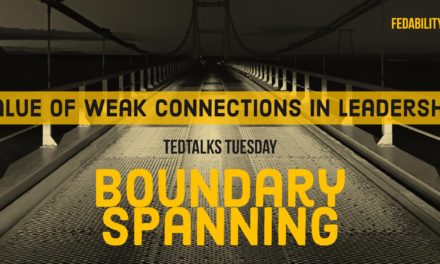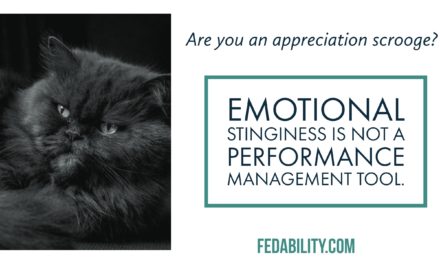When someone tells you that we need to focus on customer service, it’s hard to argue with them. We need to shift the discussion from providing a service without first considering customer value.
In the Ted Talk by John Boccuzzi, he describes how the service he was provided at a local eye-glasses shop changed his perspective on glasses. And, more importantly it won the loyalty of his purchases in the future.
John explains that the representative asked him a few questions about what is important to him in glasses. She then offered him three options. Option 1, she said, is the one he will want to buy. This option is similar to what he currently wears. Option 3, conversely, was the option he SHOULD buy. The third option, she said, is a game changer. And, she explained she was going to convince him to buy Option 3.
Now John’s Ted Talk explains that he saw this as exceptional customer service. He felt cared for. As a result, over the years he’s willing to drive many hours and even take personal leave to go to this specific store to buy his glasses.
While I think John’s story provides a good example of winning customer loyalty, I disagree with his interpretation of why he continues to shop at the eye-glasses store he so adores.
John says it’s because the owner made him feel good about the purchase. He believes it was about how he was treated. He argues in his Ted Talk that customer service is how you make the customer feel throughout the buying journey.
I disagree.
I believe that what really drives his loyalty is that the shop delivered what he needed – and not necessarily what he wanted.
As I’ve written in a prior post, customer service seems to be equated with doing whatever the customer wants. That is, the provider of the service often becomes the proverbial door mat. Instead, I believe we need to shift to a discussion of what value we offer to our customers.
Customer value
Let’s be clear about how we define customer value. In short, it is the benefit (perceived or real) that a customer receives relative to the alternatives or the associated costs.
Customer service, conversely, is support offered (before, during, and after purchase or use of product) that helps them have an enjoyable, easy, or positive experience with you.
Take a minute to think about those differences.
I can absolutely see the attraction of focusing on customer service.
Who doesn’t want to think they make people feel good? Besides that, it’s relatively easy to measure customer service. Did they enjoy working with you?
Based on the story John shares in his Ted Talk, I absolutely believe he enjoyed his experience. The representative sounds pleasant, funny, and attentive. If you listen to his story, all John wants is a pair of glasses that helped him be able to see.
There is a high probability that this is not the first time John went into an eye-glasses shop and met a nice sales person. And, of course, pretty much any eye-glasses shop would have been able to sell him a pair of glasses that helped him
Customers need more than just a feeling
John’s experience is different because the representative took the time to learn what was important to him. Then, she used her expertise about face structure, popular styles, and personality. Using that expertise, she offered a product that exceeded John’s prior experiences at any other shop.
John shares that his new glasses receives many compliments. I get the impression that John did not consciously think about wanting to improve his appearance. He sees glasses as a necessary evil.
In this story, the store provides more than customer service. They provide customer value. The value that John receives is that not only can he see – he is complimented on his appearance. He probably feels more confident, more attractive. Perhaps he’s viewed more positively by his own customers – and believes that helps him make more sales in his own role.
In short, John gets more value from that shop than others that are closer and/or open on the weekends. He thinks the cost of fuel, wear and tear on his car, and his vacation time is worth what he gets from that shop.
So what does this have to working in the government?
The current administration has put forward the President’s Management Agenda. One of the focus areas in the Presidential Management Agenda (PMA) is customer service and customer experience. The stated goals in the PMA on this area are (page 28 of PMA):
- Transform the customer experience by improving the usability and reliability of our Federal Government’s most critical digital services
- Create measurable improvements in customer satisfaction by using the principles and practices proven by leading private sector organizations
- Increase trust in the Federal Government by improving the experience citizens and businesses have with Federal services whether online, in-person, or via phone; and
- Leverage technology to break down barriers and increase communication between Federal agencies and the citizens they serve.
As a result of this PMA, our agencies will have an increased emphasis on customer service.
And, I’ll admit that after my recent experience trying to get a license through the Federal Communications Commission’s (FCC) website, goal 1 would be HUGE in terms of my positive feelings towards government services.
But, as an everyday government employee, I want to challenge you to not be satisfied with these customer service goals. I want to challenge you to instead create customer value goals. Because when you focus on customer value – the customer service will be a natural bi-product.
What are your customer value goals?





